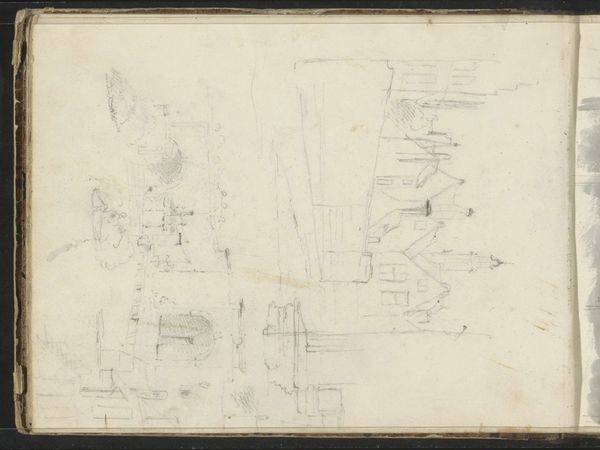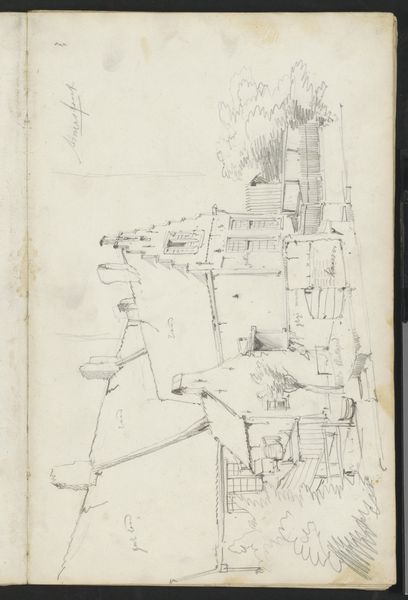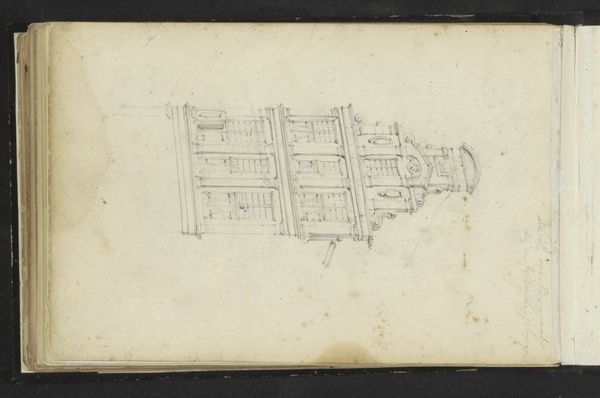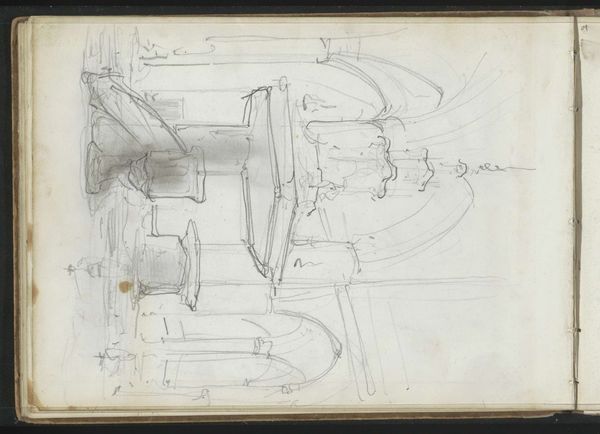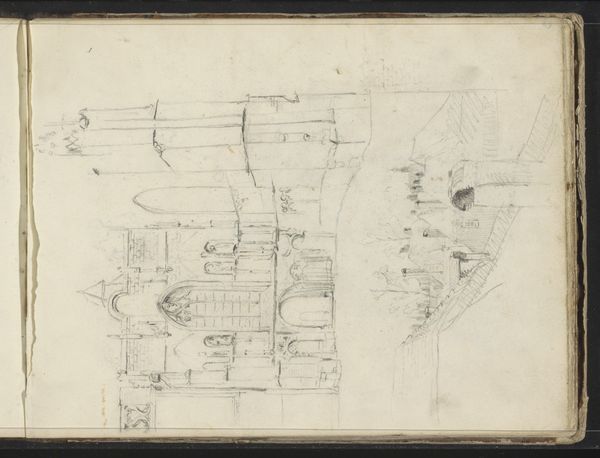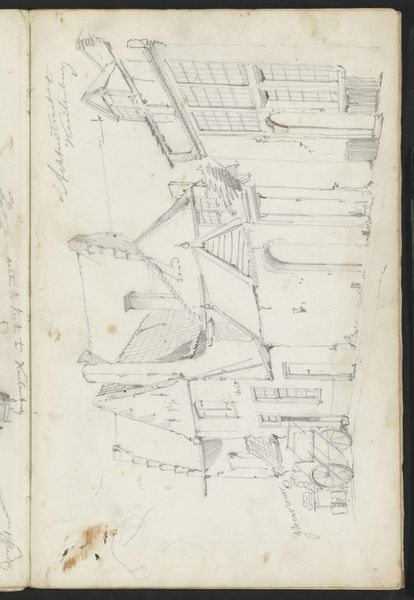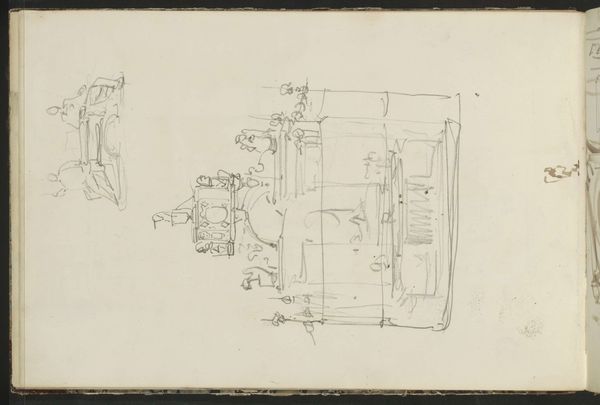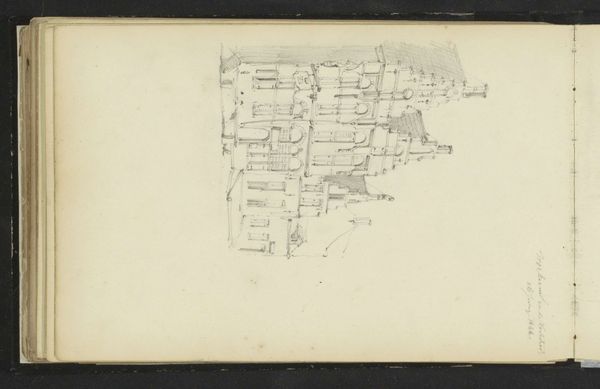
Exterieur van een kerk en vogels op een vliegende steunbeer 1822 - 1893
0:00
0:00
willemiitroost
Rijksmuseum
drawing, pencil, architecture
#
drawing
#
aged paper
#
toned paper
#
medieval
#
quirky sketch
#
sketch book
#
landscape
#
form
#
personal sketchbook
#
pencil
#
line
#
sketchbook drawing
#
watercolour illustration
#
storyboard and sketchbook work
#
sketchbook art
#
watercolor
#
architecture
Copyright: Rijks Museum: Open Domain
Willem Troost created this drawing, "Exterior of a Church," using graphite on paper sometime in the 19th century. The apparent simplicity of a graphite sketch belies its social significance. Graphite, derived from mined sources, connects the artist to the industrial processes of extraction and refinement. The paper, likely mass-produced, also speaks to the rise of industrial manufacturing and consumption during the 1800s. Troost's drawing style, with its delicate lines and attention to detail, reflects the artist's skill and control over the materials. The very act of sketching, capturing a fleeting moment or observation, contrasts with the labor-intensive process of building a cathedral. The work invites us to consider the relationship between architecture, labor, and the act of artistic representation. Ultimately, "Exterior of a Church" encourages us to look beyond the surface of the image and consider the broader social and economic contexts in which it was created. It reminds us that even the simplest of materials can carry complex cultural meanings.
Comments
No comments
Be the first to comment and join the conversation on the ultimate creative platform.
